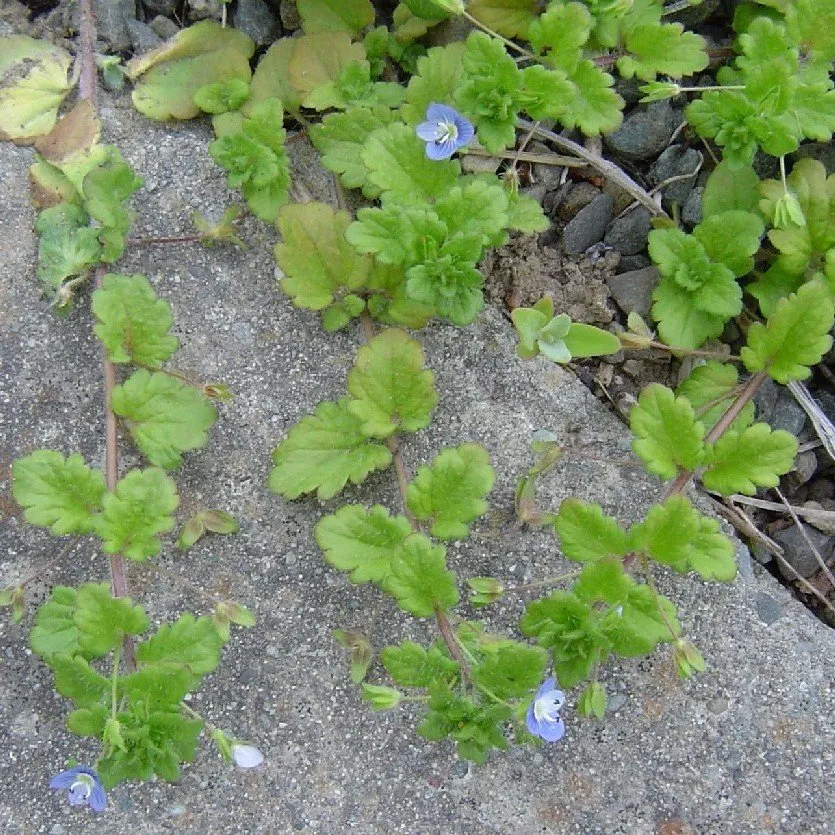Speedwell
Home / Weed Guide / Speedwell

Speedwell
Creeping Speedwell
Another speedwell species with stolons is Turf Speedwell, but the leaf shape is different in this, and tends to not be as hairy. Creeping Speedwell can also be distinguished from Turf Speedwell during flowering as this species has fairly large blue flowers on long stalks. This species is also more aggressive than Turf Speedwell, forming denser mats.
Control
The herbicides tolerated by creeping speedwell include clopyralid, dicamba, picloram, MCPA and 2,4-D. The best way of controlling Creeping Speedwell is to apply a mecoprop/ioxynil mixture. It should be applied in spring or autumn, and usually needs to be reapplied six months later to kill off any regrowth
Field Speedwell
Field Speedwell is a small annual species, normally growing as a winter annual, germinating in autumn and flowering in spring. It’s similar in appearance to Scrambling Speedwell, although this species is far more common in turf. Both Scrambling and Field Speedwells have similar leaf shapes and are both hairy. The absent of flower stalks when the plant is flowering is a way of differentiating them. The flower instead grows at the base of the leaves.
Control
All speedwells are difficult to kill selectively in turf due to their resistance to MCPA, 2,4-D, clopyralid and picloram/triclopyr mixtures. It is best controlled with ioxynil as a seedling, while a mixture of ioxynil, bromoxynil and mecoprop will kill older plants. Being an annual, it will die off naturally in spring anyway, and keeping turf dense in autumn will stop it reestablishing again.
Scrambling Speedwell
Scrambling Speedwell is often found in turf, and is a common annual weed that can be present in unkept lawns.
This species can germinate in spring and autumn and doesn’t grow to be very big, although it does tend to have the biggest leaves of the Speedwells mentioned here.
It is quite a hairy plant, with hairs on both the stem and leaves. This species scrambles across the ground – hence where its name comes from. This species can be confused with Staggerweed, although that has a square stem in comparison to the round stem of Speedwell.
Control
There are many herbicides that control it, such as a mecoprop/ioxynil mix or herbicides based on diflufenican. MCPA and 2,4-D do a poor job of killing it. It is tolerant of trifluralin, dicamba and clopyralid.
Turf Speedwell
Turf Speedwell has no hairs on its leaves, and is the only one that has white flowers with blue streaks through them, whereas the other species mentioned here have blue flowers with white streaks through them. The flowers of Turf Speedwell and Field Speedwell have no stalks, unlike Creeping Speedwell and Scrambling Speedwell.
The leaf shape of Turf Speedwell is slightly different to the other Speedwells, and the leaves are hairless, unlike the others.
Control
Turf Speedwell is best controlled using diflufenican or a mixture of mecoprop and ioxynil applied in spring and autumn.
Find out more here